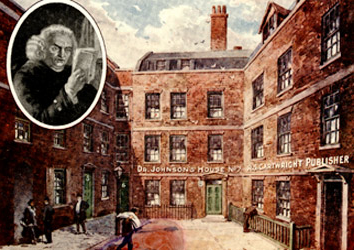
As Johnson wrote his dictionary, he left the imprint of his character on every page. He was a concerned political citizen, a devoted educator, a lover of literature, a strained husband. He was also, inevitably, a product of his cultural age. The text is a gathering and convergence of political, religious, artistic and interpersonal experience. In his Pragmatogonies, Bruno Latour wrote that “what we call modern collectives are not the ones in which society and technology are finally divorced from each other, but those in which relations are so intimate, transactions so many, and mediations so convoluted, that there is no longer any plausible way to differentiate for good a collective body, an artifact and a subject.” Johnson’s Dictionary epitomizes the symmetry Latour observes between humans and artifacts.
This reciprocal relationship has endured to the present day. The influence of Johnson’s Book permeates present day academic and legal traditions just as Johnson’s own standing in literary and cultural history is embedded in the Dictionary. Reference to Johnson’s Dictionary can be found in countless works of English and American fiction and journalism. In Moby-Dick, Ishmael describes his tendency to seek “the weightiest words of the dictionary”; to do so, he has “invariably used a huge quarto edition of Johnson, expressly purchased for that purpose; because that famous lexicographer’s uncommon personal bulk more fitted him to compile a lexicon to be used by a whale author like me.” (Hitchings, 2005, p. 248). Even when the publication of the Oxford English Dictionary displaced Johnson’s text as the definitive lexical reference in 1928, Johnson’s work lived on; the Oxford English Dictionary preserves over 1,700 of his original definitions, marking each with an unassuming “J.” (Hitchings, 2005). His achievement continues to inform contemporary scholarship. Perhaps more surprisingly, Johnson’s work is built into the fabric of American law. “To understand a law,” Hitchings notes, “you need to understand what its terminology meant to its original architects.” (Hitchings, 2005, p. 249). Johnson's Dictionary is much more than a mute relic of a bygone era; it is a vibrant cultural and literary artifact whose legacy has yet to diminish in scope.
Navigate: Don't Judge A Book By Its Cover: An Introduction / The Early Life of Samuel Johnson / The Dictionary in a Sociocultural Context / Nine Years in the Making / The Dictionary Hits the Shelves: Critical and Public Reception / Traces of the Author and his Time / Conclusion: The Legacy of a Book / *Bibliography*
